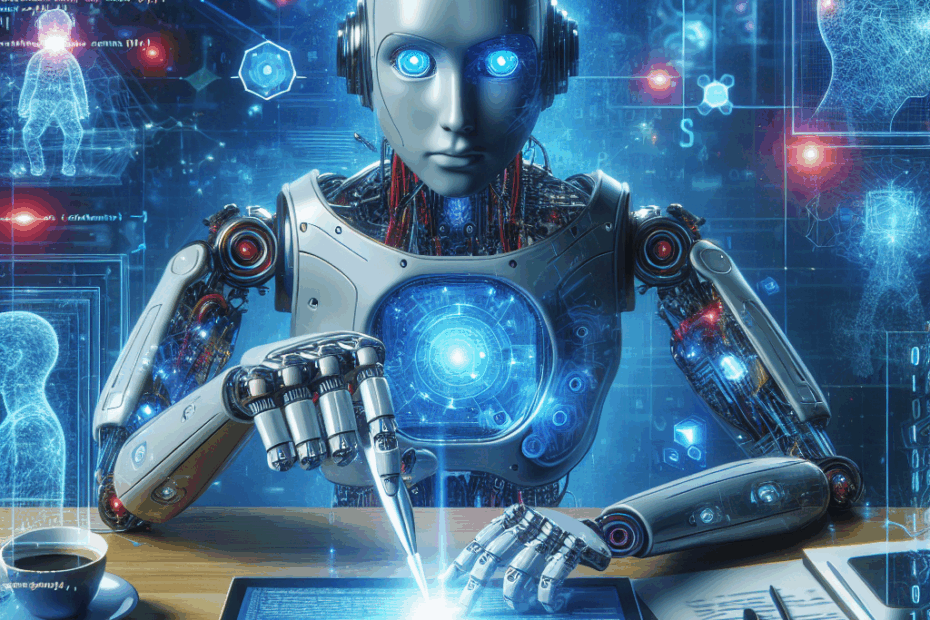“`html
AI is Writing Code Now? Microsoft Says It’s Happening!
Hey everyone, John here! Today, we’re talking about something pretty wild: AI writing code. Yes, you heard that right. Apparently, Microsoft, the company behind Windows and Xbox, says that AI is now responsible for a significant chunk of their code.
Microsoft’s CEO, Satya Nadella, mentioned that around 30% of the code in some of their projects is now being written by AI. That’s a big deal! It means computers are starting to automate one of the most complex and skilled jobs out there: software development.
How is this even possible?
Well, it’s all thanks to the advances in AI, especially something called “Large Language Models,” or LLMs.
Lila: John, what’s a Large Language Model? It sounds complicated.
That’s a great question, Lila! Imagine you have a super-smart parrot that has read almost every book and article ever written. It understands language really well and can even generate new sentences and paragraphs that sound natural. That’s essentially what a Large Language Model is. It’s been trained on massive amounts of text data, allowing it to understand and generate human-like text. In this case, the “text” includes a lot of computer code, so the AI learns to “speak” computer languages.
Where is this AI coding being used?
It seems like this AI-powered coding is mostly being used on newer projects at Microsoft. The article mentions “the new stuff.” This makes sense, as it’s easier to introduce new technologies into projects that are just starting out.
Think of it like building a house. It’s much easier to install smart home features when you’re building the house from scratch than to try and retrofit them into an older home.
Why is this important?
AI-powered coding has the potential to change the way software is developed. Here’s why:
- Faster Development: AI can write code much faster than humans, potentially speeding up the development process.
- Reduced Errors: AI can help identify and fix errors in code, leading to more reliable software.
- Lower Costs: By automating some coding tasks, companies can potentially reduce their development costs.
- Focus on Creativity: Human developers can focus on the more creative and strategic aspects of software development, rather than getting bogged down in repetitive coding tasks.
Microsoft’s Grand Plan: Merging Everything!
The article also hinted at something else exciting: Microsoft is trying to merge Word, PowerPoint, and Excel. For a long time, these programs have been separate, but Nadella thinks that LLMs can help bring them together. Imagine being able to seamlessly copy information and functionalities between these programs, creating a much more unified and powerful experience.
Lila: Wait, how can AI help merge programs like Word and Excel? They seem so different!
That’s a good point, Lila. Think of it this way: AI can act like a translator and a builder at the same time. It can “translate” the different programming languages and structures of Word, Excel and PowerPoint into a common language that it understands. Then, it can “build” bridges between them, allowing features and data to flow more easily. It’s like having a universal adapter that lets you plug any device into any outlet, regardless of where it’s from!
The Future of Coding?
The fact that AI is now writing a significant portion of Microsoft’s code suggests that the future of software development is changing rapidly. While it’s unlikely that AI will completely replace human coders anytime soon, it’s clear that it will play an increasingly important role.
For me, this is both exciting and a little bit scary. On one hand, AI could help us create amazing new technologies and solve some of the world’s biggest problems. On the other hand, we need to make sure that AI is developed and used responsibly, and that we don’t become too reliant on it. As Lila said, it’s all a bit mind-blowing for us beginners!
Lila: It’s all a bit overwhelming, but also super cool to see how AI is changing everything! I’m excited to see what happens next.
This article is based on the following original source, summarized from the author’s perspective:
30 percent of some Microsoft code now written by AI –
especially the new stuff
“`
